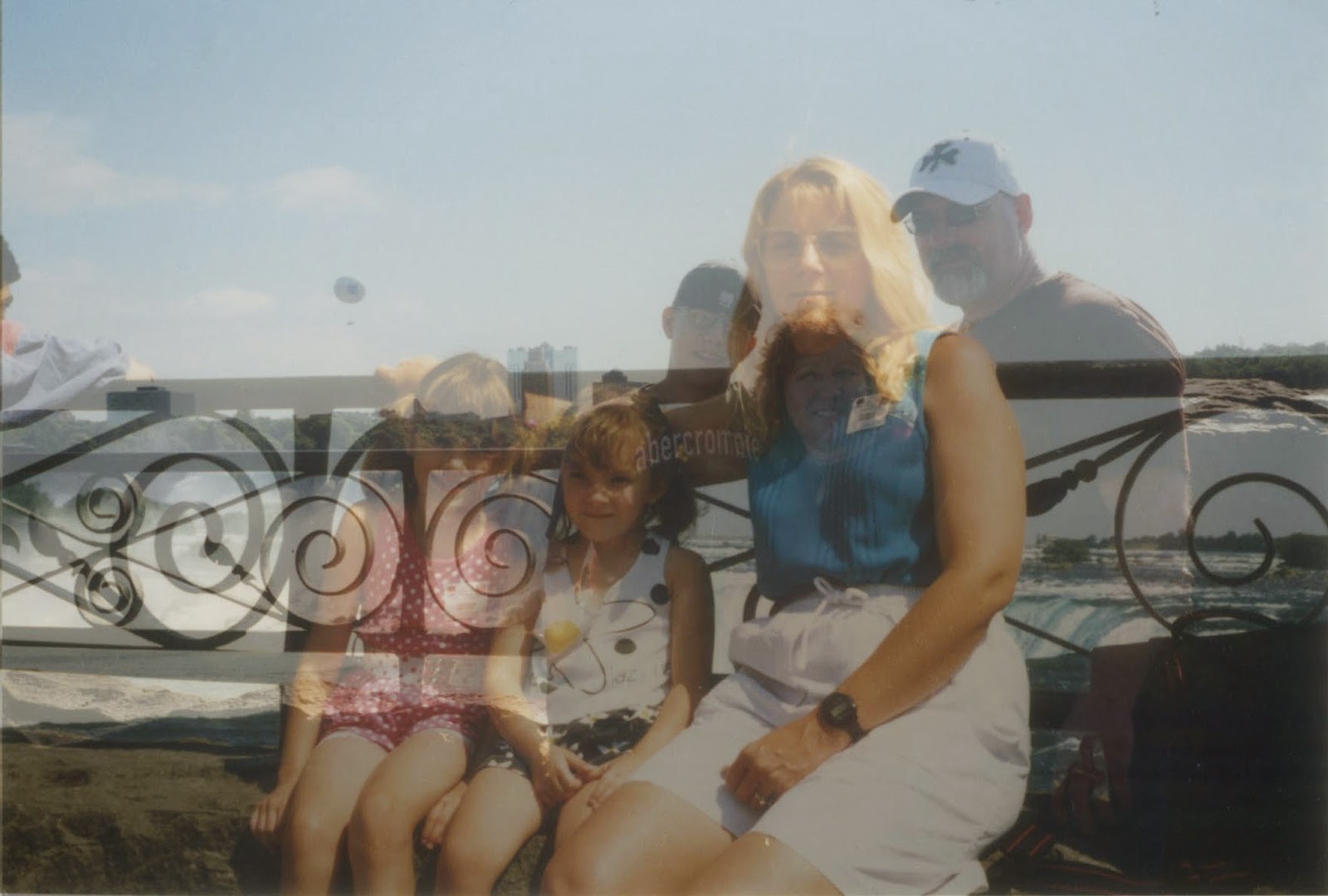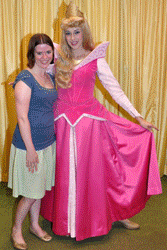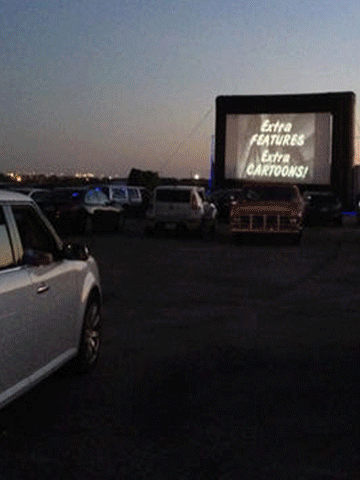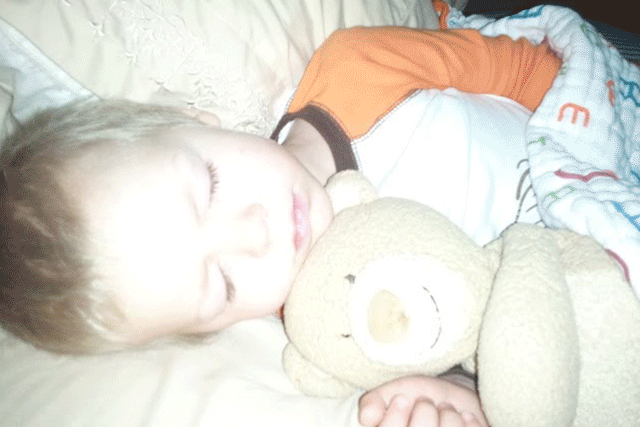Restoring old photos of course! This is a wedding photo of my great-great grandparents, married in 1890.
IntegArt
To do what is right and just is more acceptable to the Lord than sacrifice. Proverbs 21:3
Thursday, May 1, 2014
Tuesday, April 22, 2014
Thesis: Life Events
Tonight, opening in DAAP Galleries is our DAAPworks. We have survived. We have finished. This culmination of our undergraduate careers opens for five days, then closes to make itself history. Can all of our hard work and late nights be summed up in one show? I for one, know that the work I have hanging in the gallery right now, in no way reflects the rest of the work I have done in my four years at DAAP. I have learned so much, but mostly, I learned to survive. Survive the terrible teachers. Survive the long critiques where no one likes your work. Survive the endless list of deadlines and due dates. We have come this far, and no one can stop us now. Here's to the University of Cincinnati's Design, Architecture, Art, and Planning, Fine Arts Class of 2014.
Tuesday, April 1, 2014
Thesis: The Collective Memory
The Collective Memory
I believe in the collective conscious. Because we all have the
same biological makeup, we all understand certain things, such as what it is
like to have a beating heart, what it means to feel pain, and the effect that
emotions have on our psychological and physical lives. Likewise, we all
understand memory, we all have memories, and we all have the ability to recall
information from deep inside our brains- the physical act of remembering. We
all have memories of being excited to learn something new, being with someone
we care about, and feeling pain. We have these memories, and they are
individualized with details from our own lives, but they are not entirely
unique. They are universal.
My family has been struck hard by dementia and Alzheimer's. Because the
memories that we share are in such a fluid state, I am interested in examining
and preserving the ideas of the memories that we, as a family, share. The
memories that I have right now will fade over time and be replaced with
memories I have yet to make. When I have reached the age of my grandparents, it
is likely that I, too, will succumb to dementia. If or when that happens, all I
will have left to remember my life right now, will be the photographs I have.
Memories are important to all of us. As we are young, our memories are
as strong as our body, unfaltering in our own mind. As we age, memory is often
the first thing to go. We become forgetful about where our car keys are, or leave
to take the grocery list at home when we go out shopping. In our last few
years, for some people, memory is all that remains. Our body strength is gone,
so we are often left to sit in a chair and remember our past. For less
fortunate others, there is no memory, and if there is, it could not possibly be
'accurate' according to what happened forty, fifty, or sixty years ago. Time
changes everything. Although details like the name of the elementary school one
attended can be recalled, the look of the hallway may be remembered
differently. If I went back to the school I attended in the first grade, seeing
it would change my memory. Fifteen years later, I am much taller and am
physically seeing the school differently. This new memory would somehow mesh
into the old one to create a new hybrid memory- replacing the other with
altered versions of themselves.
When first starting to work with memory and relating it to
photography, there were a lot of questions that entered my mind.
“Am I remembering an event or the memory of the memory of the event?
Am I simply remembering the photograph and projecting the event in my mind? I
want to call this an inspired memory. For that matter, do we ever have original
memories? Once we remember something (which is pretty much immediately after
the event) are we remembering the event or remembering the memory of the
perception of the event after it happened? Do we experience anything at
all or is it all just immediate perception memory?”[1]
How does a photograph affect memory? I have seen so many family photos
from that birthday party that I am unable to discern which memories are real
and which are fabricated from a photograph. Voices are not captured in
photographs, so I know that my memory of my late great-grandmother’s voice is a
real memory. The smell that lingered on her after she came home from the
nursing home for a holiday is captured in my mind- not a photograph. However,
the feel of the sweater that she always wanted me to wear may be fabricated
because I have felt that fabric many times since she died. Because of these
things, my memory of her is affected, perhaps even altered, to a point that I
could not identify what was a real occurrence and what was conceived in my own
mind.
| Figure 1, "Ballerinas" |
Over
the course of the year, the work I have been doing has grown and changed. What
was conceived as a separate project became a necessary process for my thesis
work. I started using historical photos and layering them in Photoshop to make
them nightmarish (figure 1.). My work grew into a critical process: I found
images (which were my own family photos- no longer anonymous historical
photos), scanned them into digital copies using a high quality scanner, then
layered them in Photoshop to create a distorted effect, much like our memories
become distorted over time. I began looking at and collecting
my own family photos. Originally, they were all from long before I was born. I
was not to have any connection to them, because my family history did not yet
include me. I was remembering these people I had never met through their
photographs. I transitioned to using my own family photos, that included
myself, and my work became more about my own memories and how my peers and
viewers connected with them. Some people saw something in the images that
connected with their own memories, such as a shirt or wallpaper. The aesthetic
changed from a chunky drop-in-place blend of my own photos with those from my
family’s past to layering and blending of similar photos on top of each other
(figure 2). My research has consisted of finding and collecting these old
photos and scanning them into Photoshop, then print them at various sizes on
matte paper. Matte paper was important to me because it felt historic. It represented the paper choice of
20th century portraiture.
 |
| Figure 2, "Couch" |
Keeping a blog is something that I have done since I was old
enough to be on the Internet. All of my thoughts and ideas that I remember now
are still somewhere out in cyberspace today. The process of art school has
required many blogs. Last semester, though, was the most productive. As stated
above, I have had many ideas and having a blog was the best way to record them
and discuss them with my classmates. Writing throughout the process of art
school, whether it was for blogs or even for this thesis, helped me clarify my
work. It made me question things that I would not have seen had I not written
my thoughts down. Writing will continue to be a part of my creative process in
the future.
There have been many artists that have
influenced my work and my ideas. Jeffery A. Wolin influenced me to include text
in my work. His series of portraits of Holocaust survivors have their memories
from concentration camps handwritten on the images (Figure 3).
 |
| Figure 3, Jeffery A. Wolin |
I have tried
this method with my own work, which creates a strange balance between what
really happened and what I simply remember. I am also interested in the repetition of history that artist
Carra Sykes portrays with her portraits of her mother and herself in parallel portraits (figure 4).
 |
| Figure 4, Carra Sykes |
The old
saying “there is nothing new under the sun” applies to almost every aspect of
life. Even though we may think that our generation is the most rebellious and
intelligent, every generation before us thought the same thing. Bryon Darby also
shows the passage of time in his work, and his aesthetic of numerous layers
overtop of each other inspired my work as I had begun to develop it.
For DAAPworks, I have created a timeline of common photos from the
average life. This timeline contains events from throughout my life thus far. These
events that I have chosen show some sort of significance, and because they are
significant, we photograph them. Some of these events include the first day of
school, and meeting my favorite Disney Princess at DisneyWorld for the first
time. These important life events are documented in a way that we would
document something for our financial records: make a copy (or in this case take
a photo) and file it away just in case we need to view it again. The format
that my thesis has taken is a conglomerate collection of photographs in a
single image. I sourced photos from the internet that were of the same life
event. For example, I chose 30 images of little girls meeting Belle at DisneyWorld and spliced them together to create
one image (figure 5).
The photos were chosen because they looked
the same. As stated before, we all have the same memories, and I want to
present that we all have the same photos that reflect those memories. To
accomplish this, I use repetition.
To find the photos that I am used for this
work, I used a special feature in Google image search. There is an option that
you can search images online by uploading an image that you want to find similar
images to. The most prominent similarity that Google finds is color. In order
to avoid this obstacle, you can also add tags like “mother with baby” or “girls
before prom” to find more specific pictures.
 |
| Figure 6, "Prom" |
Hillary Savioe states, “While collective memories are based on individual lived memories, they also constitute a commonality, a universal story,” in the abstract of her article titled Memory Work in the Digital Age: Exploring the Boundary between Universal and Particular Memory Online published in the Global Media Journal in the spring of 2010.[2] This article really helped me invest myself in using the Internet as a medium. For so long, using other people’s pictures felt like cheating or stealing. As I kept reminding myself that these people posted these images online for the entire world to see, I felt that what I was doing was showing them in a positive light. If by chance, anyone shown in any of the images would show up and be upset, I would simply remind them that they posted the images to the Internet, and I was simply using my artistic license to use them to present a positive idea.
Historically, portraiture and the idea of
posing for pictures have influenced my earlier work because the practice of
studio portraiture is dying. With the development of camera phones, candid
photos are the norm, even if they are “posed” for. The social media platform
Instagram has especially skyrocketed the amount of photos shared. These photos
range from the ever-popular ‘selfie’ to images of food and sunsets from the top
of every skyscraper in the world.
 |
| Figure 7, "Backyard" |
Emotionally, my family influenced my work. When they view my work,
they remember the same things I do, seeing my grandpa in his blue striped
shirt, and remembering how my mother made matching dresses for all the girls in
the family. Because my family was there for my memories, they experience nearly
the same one I do. My fiancé grew up twenty minutes away from where I did, with
an older sister (like I did), in the same years I did. We have had similar
lives, and that shows in our memories, and more specifically in our family
photos. We both have photos of a family portrait standing in front of Niagara
Falls. We both have photos of our mothers holding us with no one else around.
Although our circumstances were different, we grew up essentially the same.
This is reflected in our memories. We both remember going on Easter Egg hunts
in our maternal grandparents’ backyards (figure 7). The similarities in our
photos and essentially, in our lives may represent that we both grew up in the
same social and economical class. We are both white, middle class 90’s kids.
Our lives are similar, yes, but the memories we access are not solely reserved
for they same type of people as we are. Most other people remember celebrating
some kind of holiday with their families or those like family.
Theoretically, my views have not changed much
since the beginning of this project. I believe that the collective conscious is
very much present in my generation, especially since the “90’s kid” generation
is so obsessed with nostalgia. We remember things that may have been terrible
circumstances, but we remember it as great because it was in a time that
national security was sound and we had little threat of anyone toppling us
over. Childhood was another factor that influenced our feelings: we had no
worries of the future, our safety, or the economy- all of which are uncertain
and anxious factors that we, as a collective generation, feel today.
My work has been described as “late 90’s” and
not contemporary by some of my professors. I feel at ease about this because so
much of what I am working with happened in the 90s. It is fitting for my work
to be outdated as such because the ideas are from my childhood, while my
childhood influences my ideas. A large percent of my generation is obsessed
with this idea of the 90s being perfect and holy and feeling nostalgic most of
the time to try and feel as safe as they did when they were seven years old.
This is reflected in the art world. As a 90’s kid, I fit in.
I have learned that we all try to be individuals, but it is
impossible to be completely original. This has caused me to feel more at ease
with the fact that everything in the art world has been done already. Since I
cannot make anything new, I shouldn’t worry about what I’m making and just make
what I want to. I have learned that the brain is powerful enough to archive
everything we have ever seen, smelled, touched, or experienced. This
information is all logged into our hard drives and propels us to move forward
as our own individual, even though everyone else in the world has seen
something similar, smelled something the same, touched the same thing, or had a
parallel experience.
 |
| Figure 8, "Niagara Falls" |
Sometimes, this work makes me feel sad. I fell in love with Photography
at such a young age, that it is all I want to do for most of my life. This work
is not based on my own photos, but those of my life and what I remember. The
majority of the photos I am showing in these event strips are not my own and
found from the Internet. Coincidentally, a lot of my memories come from behind
the camera, or are of photos I have taken, not necessarily the memory of me
actually taking the picture.
Without memories, time is
immaterial. Only the ideas that are locked in our brains remind us how time
comes and goes. I believe in the collective conscious, that we all are the
same, and that we are all equal. We all have memories that are special to us,
but those memories are not unique. Just like we all have a brain, skin and
bones, we all have the memory of sitting with someone we love, in a special
place, at a special time. I want to explore how we experience memories, how
they change over time, and how collectively, our memories all become essentially
the same. Memory is seriously dictated by perception- perception that is
incredibly different for everyone. Even at different ages, our perception
changes when the world around us changes. There is a collective
conscious, but it is only part of who we are. In order to tap into it, we have
to connect with those around us to share our similar experiences. Even if a
memory is not exactly the same as someone else’s, it still triggers a memory in
the viewer’s mind, which connects the two memories, adding to the web that is
the collective conscious.
 |
| Figure 9, "First Day of School" |
[1] Taken from
my blog, rjbickers.wordpress.com on November 22, 2013
Labels:
antique,
artist statement,
artists,
detail,
history,
internet,
nature,
nightmares,
photo,
Photoshop,
portrait
Wednesday, March 26, 2014
Tuesday, March 25, 2014
Event Strips
What I'm working on right now is my thesis. I am exploring hoe we all have the same memories, and therefore the photos we have from growing up reflect those memories. I am finding similar photos and displaying them in chronological order, at the height that I would have been at the age in the photo. For example, the photos of the mother and baby are 19 inches tall, because the average baby is 19-20 inches at birth.
Thursday, February 20, 2014
Updated Artist statement
I thought it might be helpful to publish my updated artist statement to give my work some more context!
Without memories, time is immaterial.
Only the ideas that are locked in our brains reminds us of how time comes and
goes. I believe in the collective conscious, that we all are the same, and that
we are all equal. We all have memories that are special to us, but those
memories are not quite unique. Just like we all have a brain, skin and bones,
we all have the memory of sitting with someone we love, in a special place, at
a special time.
How can we have such similar memories if
we have different lives? To explore this, I have been using the Google image
search feature to upload a photo and search for similar photos. I find photos
that are remarkable similar to mine. These photos have the same memories:
hugging a friend before prom, a messy baby, taking ballet as a little girl.
These images capture the memory in a pictorial form. By showing how many of
these images are out there in the world, I show that many people have the same
memories I do.
I want to show these images in a
lenticular print form. This means that there are many frames in a single image.
Using a special lens, the different images can be seen at different angles, so
at one angle you see one part of one person’s memory and part of a different
person’s memory. Connecting them is the same memory: ballet, or prom, or messy
babies.
Work in progress thesis, Spring Semester
My work has been changing. For so long I wanted to layer images, and I have been, but perhaps it's time for a change. What I am doing now is taking photos of my own and inputting them into visual search
software to find images that are the same. We have the same memories, we
have the same photos.
There are 23 photo groups.
This post includes the gif forms of each group.
Eventually, I will be working with a process called lenticular printing where all the images are put through a program and printed, then covered with a special lens that will make the 2-D image look like an animation. It will be kind of like these gifs, but each image will be viewable at a different angle.
There are 23 photo groups.
This post includes the gif forms of each group.
Eventually, I will be working with a process called lenticular printing where all the images are put through a program and printed, then covered with a special lens that will make the 2-D image look like an animation. It will be kind of like these gifs, but each image will be viewable at a different angle.
Subscribe to:
Posts (Atom)










































